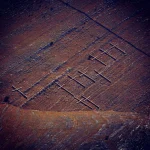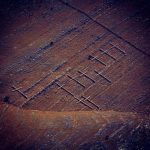The worst Croatian firefighter tragedy took place on August 30, 2007.
I was 17 when the Kornati tragedy took place, just like Marko Stančić, one of the two 17-year-old victims of the horrible tragedy on Kornati on August 30, 2007.
I can’t remember where I was or what my life looked like at the time, but I’m pretty sure that all 17-year-olds led similar lives at the time – it was the end of August, we were getting ready for our final year of high school, feeling pressured to choose which university we would go to, and reminiscing about the class excursion that we’d just got back from, probably pining over boys and girls, you know, the usual.
“Dad, we’re at Kornati, waiting for water to be delivered,” Marko wrote in an SMS to his dad right before the tragedy, probably thinking about the same things that I mentioned before, thinking that it was another routine mission after which he’d go back to his regular teenage life.
Unfortunately, he never did.
The water was later delivered, but some 500 m away from the teams, on the Veli vrh peak. The firefighters split into three teams as they lost signal so they were trying to notify their superiors. While searching for water, they got encircled by a wall of fire and they had no equipment and nowhere to run, so the blaze killed six of them instantly and badly burnt the remaining seven. Marko Stančić was in the former group.
This is the official report from Hrvoje Lalić, Professor, Specialist in Occupational and Environmental Medicine at Rijeka Medical School, who even wrote a paper on the case, called “Could the Kornati Islands Firefighting Tragedy have been Avoided with Better Occupational Medicine and Safety?” It was published in the Journal of Defense Management and you can read it here.
“An unprecedented firefighters´ tragedy happened on the Kornati Islands in Dalmatia, Croatia on August 30, 2007. This is the most terrible disaster since the Croatian War of Independence, with officials dying on duty. The underbush on the barren, uninhabited side of the island caught fire and firemen were called to help. As the summer is the season of fires, Croatia had lent a fire-fighting plane to Greece to help fight their fires. So there was an urgent need for another means of transportation and a military helicopter was used to transport firefighters and a water container. The helicopter MI-8 MTV-1 disembarked the water container at one spot, firefighters at another and left. That military helicopter has remained the issue of later speculations. Namely, in “Novi tjednik”, a Dalmatia daily, a shocking article by journalist Jelena Devcic was published entitled “Proofs buried, cleaning fluid on the ground”. It has been speculated that the helicopter hit a rock during manoeuvring, and beside a blown tire the tank was damaged with oil and petrol leaking because some oily stains were found on the rocks. The firefighters were soon surrounded by burning underbush and they burned out.
According to the official expertise that was done later, it was concluded that it was a burn-out of inhomogeneous gas mixture which occurred by burning vegetation accompanied by strong winds. A similar rare phenomenon was described in Australia in 2003 near Camberra and in Corsica in 2000 near the place Palasca. Besides our leading forensic experts, the leading world firefighting experts were invited to the Republic of Croatia who came to reconstruct the disaster, to find out the dynamics and kinetics of fire, its speed and direction of spreading, height and position of the flame and to assess the freed thermal energy.”
The two young men shouldn’t have been on the island at all, seeing that minors are not allowed to work under such conditions, and that was just the tip of the iceberg of a series of strange questions around the event.
“(…) it has been shown that the temperature at the fire site was over 1200°C and it explained the cause of such an extremely rare fire. The cause was the burn-out of an inhomogeneous gas mixture due to the burning of vegetation which was carried by a strong wind that swept over the firemen.
The idea that the kerosene from the army helicopter caught fire was discarded as unfounded and improvable. It was the seasonal receptionist in the Kornati National Park whose cigarette butt started the chain of unfortunate events.
The last question refers to the events after the disaster – why did it take hours to transport the casualties from the island to the mainland, late at night by a naval vessel. Only one fireman survived. Because of the developed PTSD and the undergoing of treatment he is not able to comprehend the whole event but he is aware of his colleagues´ death. He was transplanted to Bratislava, Slovakia to have his skin cultivated. He wishes to return to everyday life but has a long rehabilitation before him. In principle, most patients return to work after burn injuries. Of course, it depends on the type and severity of injury, which often requires a long and intensive hospital therapy as well as other out-hospital treatments. Major burns consequentially lead to the failure of organs, sepsis and shock. The survivors often get damaged muscle-skeletal and circulation systems, but also mental disorders. Deformities, loss of body parts (like the Kornati survivor with a finger handicap), may trigger serious psychological problems. Social support, the role of family and partners is of great importance. It is not only the direct victims that are mentally scarred. Three weeks after the Kornati tragedy, the volunteer fire company secretary hanged himself. He was a high-school teacher and he knew the young victims who used to be his students. The captain of the volunteer fire company needed psychiatric treatment.”
One theory was that the firemen were killed by an unexploded bomb dropped there by NATO returning from the Kosovo war in 199, some people speculated that gasoline leaked from the helicopter and caused an explosion, others were suspicious because the water canister landed 500 m away from them, and the biggest question was whether such an intervention was truly necessary.
I’m not here to point fingers, and I honestly have no idea who I would point them at, maybe it wouldn’t even matter if I did. I just remember the horror I felt and the shocked expression on my face when I realised that two 17-year-old boys weren’t going to continue school the following week and the terrible, terrible fact that the SMS I mentioned was the last thing Marko’s dad had left from his son.
With the inconsistencies in the case and the illogicality of the situation, I truly believe that the families aren’t trying to point fingers either, they just want to know the truth and find out why.
I just know that the severity of the situation and the wounds it has caused to families and friends of victims is unimaginable, so even though there might be different viewpoints on the causes, the only thing we must agree upon is that we need to honour and remember the brave men whose lives were cut short in this pointless tragedy: Dino Klarić, Ivica Crvelin, Ivan Marinović, Marko Stančić, Gabrijel Skočić, Hrvoje Strikoman, Ante Crvelin, Tomislav Crvelin, Josip Lučić, Karlo Ševerdija, Marinko Knežević and Ante Juričev Mikulin.
Families, friends and numerous firefighters from Croatia will visit Kornati today and lay wreaths on the 12 drywall crosses, designed by architect Nikola Bašić and built by fellow firemen.
Twelve lives. May they never be forgotten.










